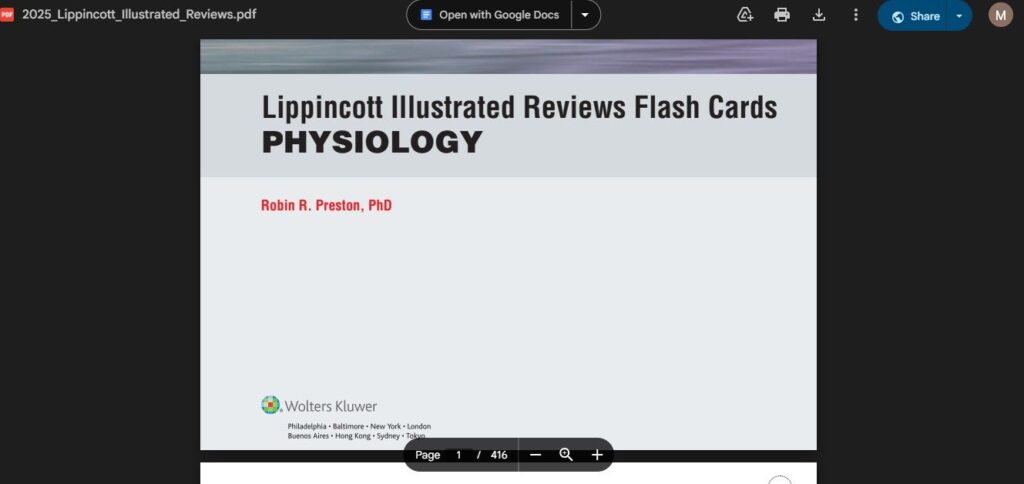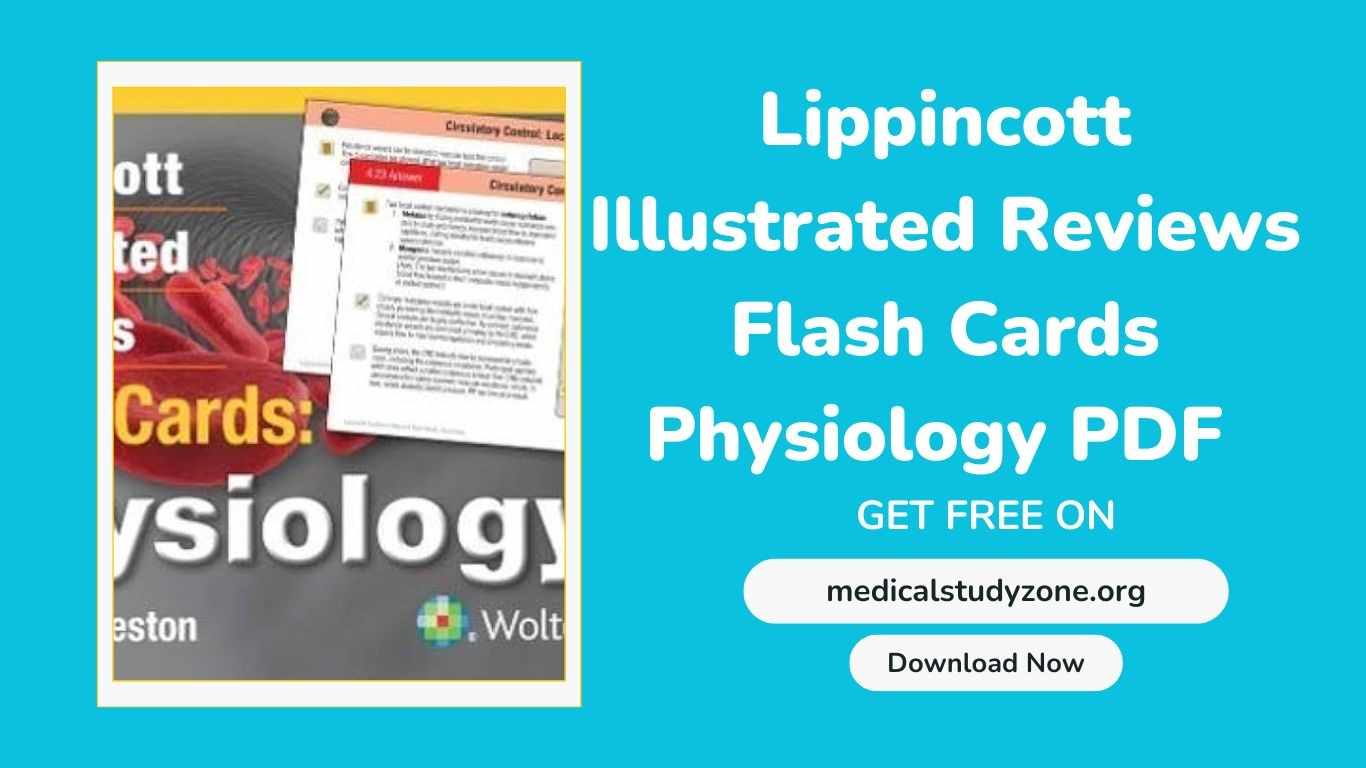looking for a powerful physiology study tool? This free flashcard set distills complex concepts into visual, bite-sized reviews perfect for rapid learning. Download now for 416 illustrated cards covering neurophysiology, cardiovascular systems, and endocrine regulation – ideal for exam prep and clinical reference.
| Detail | Information |
| Title | Lippincott Illustrated Reviews Flash Cards: Physiology |
| Author | Robin R. Preston |
| File Size | 41.2 MB |
| Pages | 416 |
| Subject | Physiology, Medical Education, USMLE |
| Download/Read Online | ✅ Available |
| Storage | Google Drive |
| Format |
- Tap “Download” (⬇️) in the top-right corner.
- Mobile tip: Use the Google Drive app for offline access.

Best alternate sources for physiology study
- Guyton and Hall Textbook of Medical Physiology – Foundational principles with clinical correlations
- Berne and Levy Physiology – Systems-based approach to human function
- Ganong’s Medical Physiology – Mechanisms of disease and homeostasis
- Vander’s Human Physiology – Molecular to organism-level integration
- Costanzo Physiology (via Boards & Beyond) – High-yield concepts for board exams
Why this book is valuable
Unlike dense textbooks, these flashcards leverage cognitive science principles for efficient retention. Each card pairs detailed illustrations (like action potential graphs) with concise explanations validated by medical educators. The spiral-bound design enables active recall practice – proven to boost long-term memory by 150% versus passive reading (Journal of Medical Education). Coverage aligns with NBME physiology blueprints, including renal transport mechanisms and autonomic nervous system pathways often tested on USMLE Step 1.
Who should download this?
Medical students preparing for physiology shelf exams or USMLE will find these cards indispensable for mastering high-yield topics like muscle contraction dynamics and acid-base balance. Nursing candidates can use them to simplify complex concepts like cardiac output regulation, while physician assistants will appreciate the clinical correlations for disorders like diabetes insipidus. Educators can also repurpose these visuals for teaching materials.
We do not claim copyright for any content shared. If you believe your copyright has been infringed, please contact us for removal.
This content is provided for educational purposes only. We encourage users to purchase original licensed books and materials.
For DMCA / removal requests, email us at [email protected].

